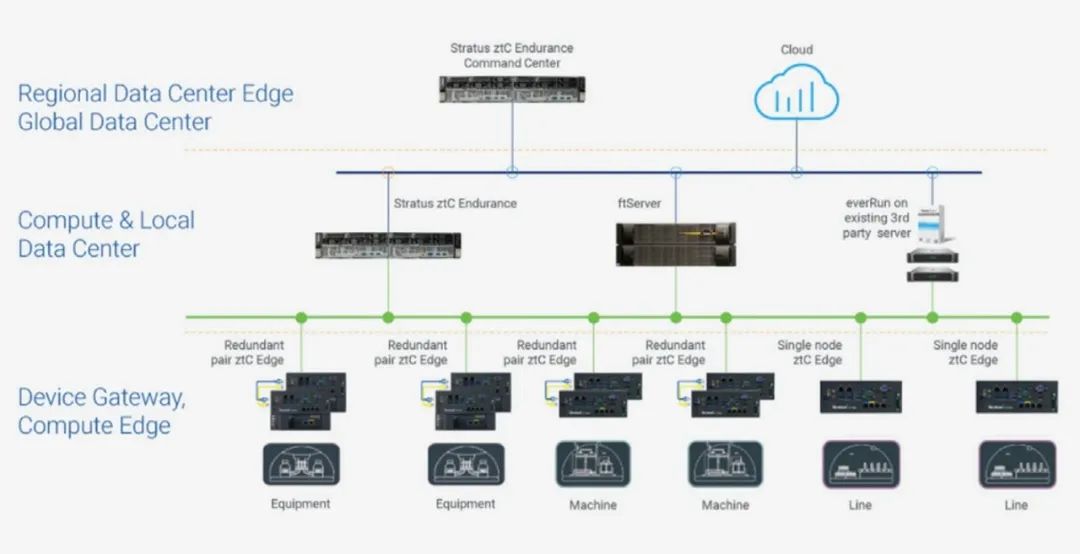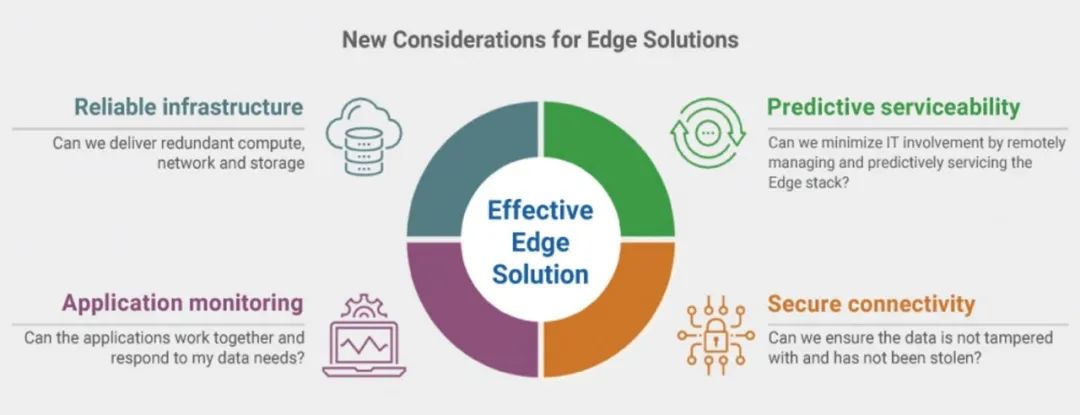Oil and gas companies need to take strong measures to find ways to bridge the digital divide, and the key to this is edge computing. By leveraging edge computing, oil and gas companies can lay the foundation for transforming their business operations, seamlessly integrating digital tools and solutions, such as remote monitoring of advanced process control systems, which will help them keep pace with the rapidly evolving demands of the energy market.

01
Reducing Costs Through Edge Computing
The remote sites where upstream and midstream companies operate are a growing ocean of data, all of which contain potential key information that can reveal emerging problems, optimization opportunities, and areas of waste that can be eliminated. When such data exists in so many different locations, visibility and control integration are key. The first step is to predict problems and opportunities, and then take action through real-time data-driven decisions.
Predicting problems is crucial to avoiding costly downtime. In the 2021 Colonial Pipeline cyberattack, downtime for an oil and gas company could mean that a large number of customers would be unable to access critical utilities for days, putting the company’s reputation at risk. Ensuring the continuous availability of critical applications and the integrity of data is vital for businesses. In some cases, recovering from failures or downtime is not an option, not only for financial reasons but also for safety. Furthermore, if there is a large volume of data being uploaded and downloaded from the cloud, the cost of data transmission can be high, but edge computing significantly reduces this cost by capturing and processing data locally.
Automation in the oil and gas industry enables employees to work more efficiently and enhances productivity and safety by automatically performing monotonous, repetitive tasks that are prone to human error. This way, employees have more time to focus on more strategic and business-critical plans, such as data analysis and skills development, thereby driving continuous growth in business and operational performance. By combining remote capabilities with streamlined operations, leaders can create a smarter and more efficient workforce.
▲Edge computing is a distributed computing model where computation occurs at the edge of operations. Edge computing platforms collect critical data from sensors and devices in the manufacturing environment.
02
Improving Efficiency Through Automation
Like other industries, embracing automation can bring returns to the energy sector. Automation not only ensures smooth operations but also helps detect problems before potential failures occur, thus avoiding costly downtime. A predictive maintenance report from Siemens shows that within just two years, the hourly cost of downtime for oil and gas companies has more than doubled to nearly $500,000, with total losses from downtime also rising sharply. In the context of a global skills shortage in the industry, the demand for urgent support for employees has surged, and implementing automation practices can help better manage and maintain information technology (IT) systems in operational technology (OT) environments.
Monitoring the health of systems is an important task for IT teams, but for enterprises like oil and gas suppliers that are spread across vast geographical locations, monitoring these systems is a time-consuming and labor-intensive task. Now, with edge computing platforms to help process data streams, oil and gas companies can easily integrate automation into their monitoring workflows, allowing them to better develop industry best practices. Creating this autonomous monitoring environment means that companies can more easily take stock of assets, determine the health and status of all systems and operational assets, and identify and deploy software patches and updates as needed.
By introducing edge computing and analytics, oil and gas companies can better support their IT and OT teams, as these solutions enable teams to collect and analyze data from the source, facilitating more efficient, real-time decision-making. From the OT perspective, edge computing allows teams to access modern on-site control with only local support. From the IT perspective, edge computing adopts the latest industry-standard components, making systems easier to manage, service, and protect.
By conducting real-time monitoring throughout the organization, oil and gas companies can more easily discover whether problems exist and ensure they have the right resources dedicated to solving issues. By enhancing the level of monitoring of systems, companies can ensure their employees can freely respond to the most pressing challenges without wasting time checking these systems in remote areas.
▲Identifying key opportunities to apply edge computing in critical business operations helps guide the overall design of edge solutions.
03
Important Ways to Create New Value Opportunities
In addition to rigorously modernizing technical infrastructure, leveraging digital tools is an important way for oil and gas enterprises to increase revenue and create new value opportunities.
With advanced technologies such as human-machine interfaces (HMI), supervisory control and data acquisition (SCADA) software, edge computing, data, analytics, and artificial intelligence, oil and gas companies can transform vast amounts of data into actionable insights. This combination of technologies enables leaders to discover where the next significant opportunities lie, and most importantly, allows them to flexibly capitalize on these opportunities.
The benefits brought by digital transformation extend far beyond the scope of the IT team’s work. This solid foundation of digital tools will make it easier to provide better experiences and consistent, reliable services to business partners. When systems are supported by edge computing and digital technologies, and downtime or interruptions are minimal, customers will have confidence in the services they receive.
No matter which industry a business is in, embracing modernization and digital transformation will be an inevitable trend, and improper implementation may ultimately affect the future success of the business, and energy companies are no exception. When it comes to managing infrastructure, system health, and processing systems in remote locations, businesses face severe challenges, and the complexity will only continue to grow. Through edge computing and other digital technologies, oil and gas enterprises have powerful means to break down data silos, effectively analyze data from remote locations at the source, and open up new revenue streams. With edge computing and the right tools, oil and gas companies can fully leverage their operations and, more importantly, not fall behind in an increasingly digital-first environment.
Heavyweight Professional Training
Digital Twin and Digital Mainline Technology Application Training Course
March 18-19, 2025 · Shanghai
Long press the QR code below
to quickly register online





